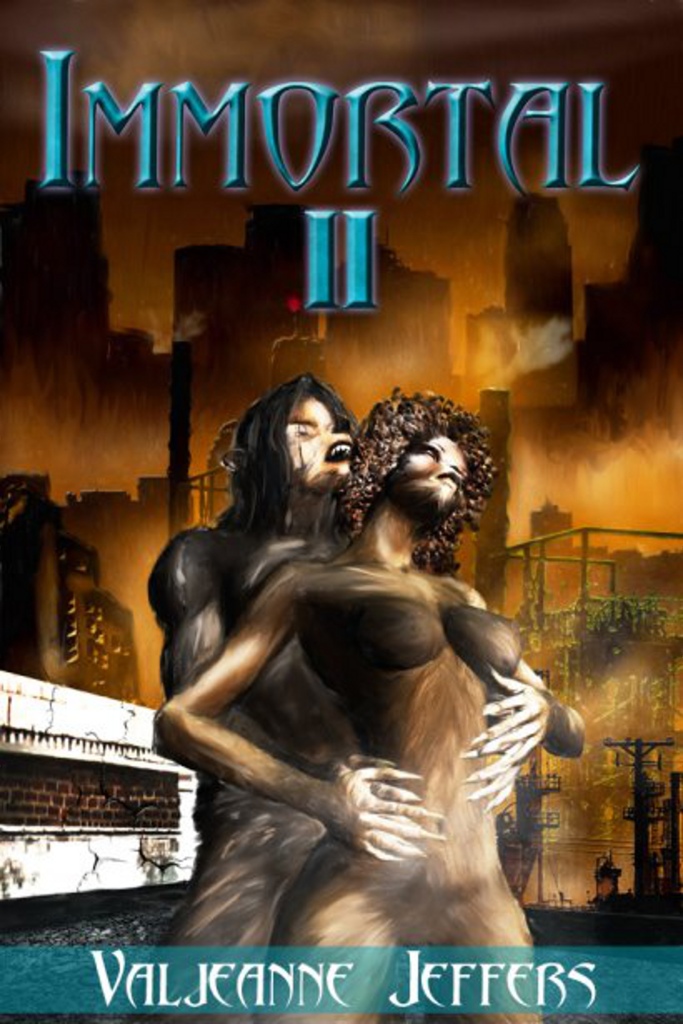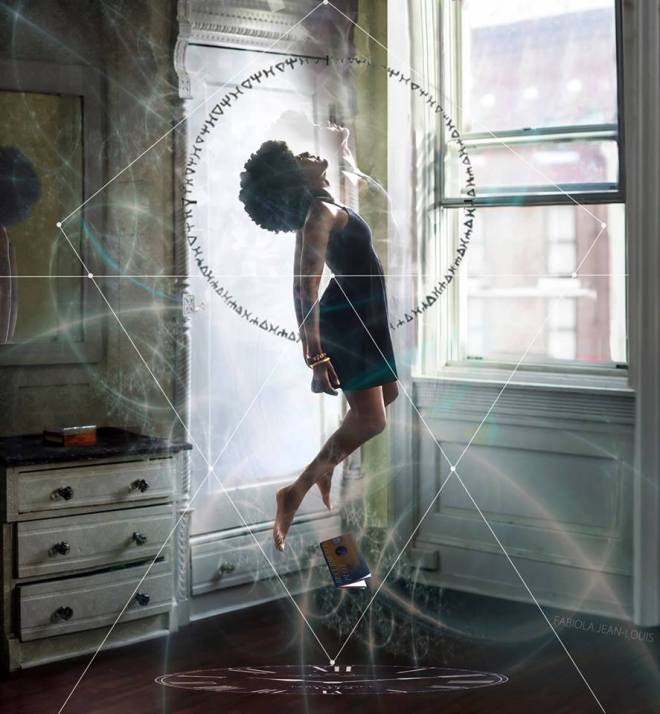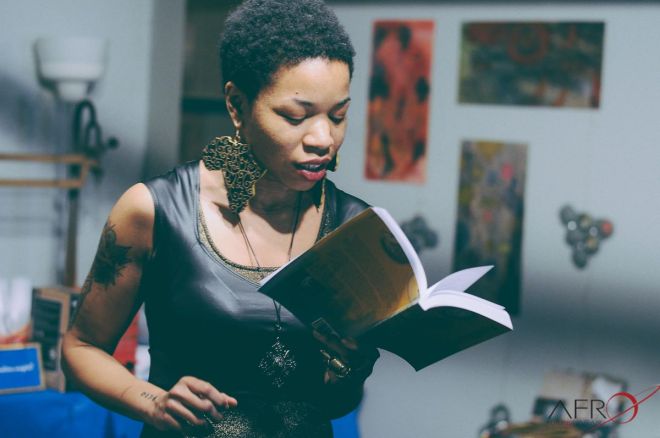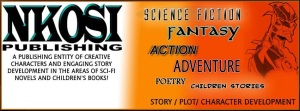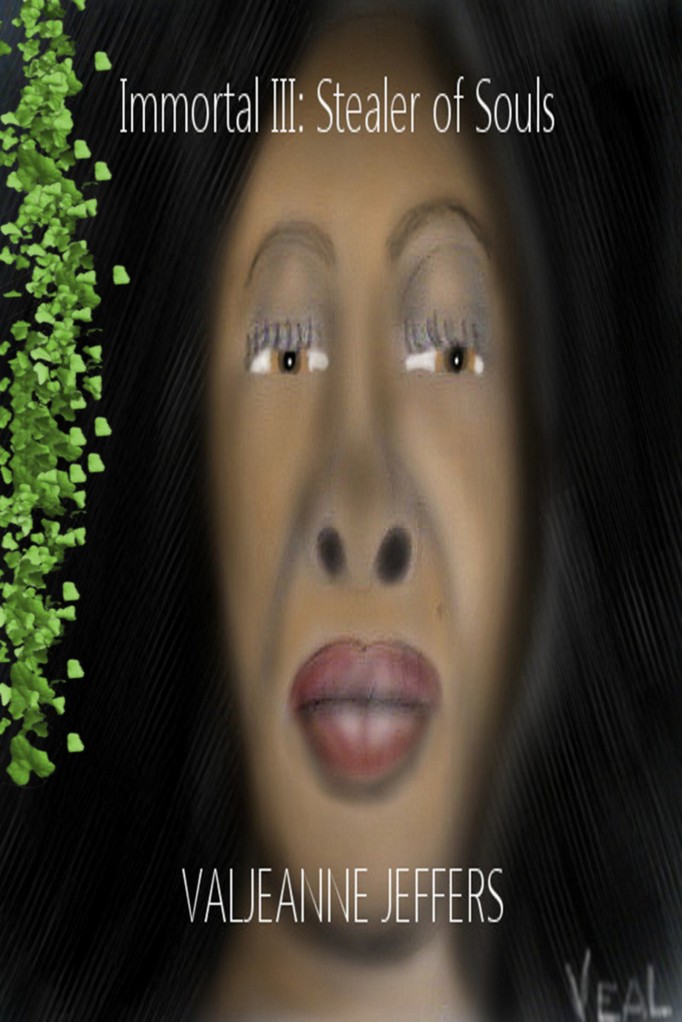
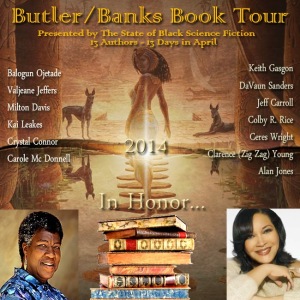
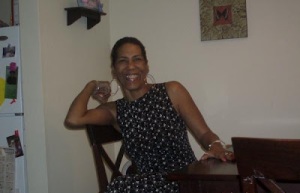
SPOTLIGHT ON AUTHOR VALJEANNE JEFFERS
Valjeanne Jeffers is a graduate of Spelman College and a member of The Carolina African American Writers’ Collective. She was also a contributing author at the Octavia Butler Arts and Activism Celebration at Spelman College 2014.
She is the author of the SF/fantasy novels: Immortal, Immortal II: The Time of Legend, Immortal III: Stealer of Souls, and the steamfunk novels: Immortal IV: Collision of Worlds and The Switch II: Clockwork (includes books 1 and 2); and the nonfiction volume: The Story of Eve. An inteveiw with Valjeanne also appears in 60 Years of Black Women in Horror Fiction. She was a semi-finalist for the Rita Dove Poetry Award and The Switch (book I) was nominated for best eBook novella by the EFestival of Words.
Valjeanne’s poetry has been published in The Ringing Ear: Black Poets Lean South, Drumvoices Revue, Revelry and Pembroke Magazine. Her fiction has appeared in Steamfunk!, Genesis: An Anthology of Black Science Fiction Volumes I and II, Griots: A Sword and Soul Anthology, LuneWing, PurpleMag, Genesis Science Fiction Magazine, Pembroke Magazine, Possibilities, 31 Days of Steamy Mocha, and Griots II: Sisters of the Spear. An excerpt from The Story of Eve was also published in PurpleMag. She is also co-owner of Q and V Affordable editing.
Her two latest novels: Mona Livelong: Paranormal Detective and Colony: Ascension will be released later this year. Preview or purchase her novels at: http://www.vjeffersandqveal.com
Contact Q & V Affordable Editing at:http://qandvaffordableediting.blogspot.com/
Valjeanne blogs regularly at: https://valjeanne.wordpress.com
She has a podcast as “Crystal Temptress” (with her co-host Quinton Veal as “Loyal Fang”)http://www.blogtalkradio.com/vjeffersandqveal
Here’s an excerpt from her third novel Immortal III: Stealer of Souls:
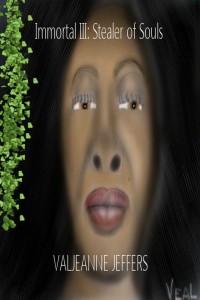
Cover art and design by Quinton Veal.
Annabelle sat on her porch, watching them as they shuffled past: the weeping willows and bluish brown waters were a soothing backdrop to their passage. Shacks lined the main road, clusters of the little wooden houses were scattered behind it. To the left, sprawled Master’s hundred acres of farmland. To the right, for a half mile his serfdom continued.
Sharecroppers, ages twelve to fifty, trundled along the dusty road. Jet black, ginger, caramel brown, tofu and butter colored. The men wore patched shirts, and threadbare trousers. The women, calico dresses, their hair tied back with colorful scarves or threaded with string. Fifty years ago, their mamas and daddies had belonged to old Master, now long since in his grave.
Today, the law said they belonged to themselves. But young Master Tom, with his frigid blue eyes and corn silk hair, owned them—like his father before him. Just not in name.
Year after year they planted cane and cotton. They paid Tom rent to live in his shacks. They brought supplies in his grocery. Shoes. Bolts of cloth. Tools. So by the end of the year, they owed their wages to him and had to spend the next paying it off.
They belonged to Master still. Even if that proclamation did free the slaves.
The sharecroppers greeted her as they passed. “Evening, Miss Annabelle,” Lizzy, an ebony skinned girl of twelve, sang as she walked alongside her tired mother.
“Evening, Lizzy… Mabel.”
“Evening, Miss Annabelle.”
The old woman took a wooden pipe from the tin plate beside her and filled it with tobacco. She puffed serenely, watching their exodus as the setting illuminae painted the horizon violet and gold.
Annabelle was dark brown and thin to the point of emaciation, with a wide nose and thick lips. Her bony skull peeked through sparse gray hair, pinned into a bun at the nape of her neck. Her brown eyes were rheumy, her face heavily lined. She looked to be a hundred.
In truth, she was much older.
She’d earned her cabin, free monthly rations and tobacco, as a young woman working in the fields for old Master Henry. That was before she caught his eye, before he brought her into the big house as mammy to his son. Later, she became his lover.
Mistress Sarah always knew Henry had a taste for slave women. After a while, it seemed all he had a taste for was Annabelle.
The slave community had whispered about this. Sarah could be a real hell raiser when she took a mind to it. She’d been known to throw tantrums – that included throwing dishes at Henry—and often had his lovers whipped and sold in his absence.
Now her husband’s favorite concubine was mammy to her son? The quarter held its breath and waited for the fireworks.
But Sarah never raised a hand to Annabelle. And she kept her mouth shut.
So night after night, Henry visited Annabelle’s little shack often not emerging until the next morning. It seemed he couldn’t get enough of her black flesh. Until he was too old to do anything more than dream about it.
She smiled to herself. He never knew he was shortnin’ his own days. The old woman rose gingerly to her feet and hobbled inside to check on dinner.
Pushed against the right wall, was a featherbed. At the end of the bed was a mirror, as tall as she, with a carved, wooden frame: both gifts from Henry.
To the left, iron pots and pans hung from the wall. Underneath, a bucket was filled with dishes and beside it, one for drawing water. Across from the bed was a fireplace; a pot filled with mustard greens and salt pork hung over the glowing coals. Hoecake bread lay amongst the ashes.
Annabelle fished a plate out of the bucket, and walked over to the fireplace to fix a plate. Do it after dinner. After they eat.
***
Darkness had fallen and everyone was asleep except the bullfrogs and crickets. It was a weeknight, and any man, woman or child who had a mind to work tomorrow was in bed.
Except at Elmo’s juke joint, where the night crowd still lounged about—drinking and dancing to the low down Blues—folks brave enough or stupid enough to think that they could guzzle hooch for half the night, and work the next day.
The juke was the only thing in the vicinity that Master Tom didn’t own. It belonged to Elmo, a strapping quadroon. But he paid Master to let him stay in business and Tom, in turn, kept him supplied with corn liquor and beer.
Annabelle stepped out into the warm night air. Above her, clouds billowed past two swollen, orange globes.
Elmo’s joint was two miles down the road, and behind a thicket of trees next to the river. In the distance, beyond the churning waters she could see the lights of the juke. She could see inside too.
Johnny was six feet, two inches of lithe muscles: his skin the color of brown sugar, his hair black and curly; his teeth like rice. He’d been a ladies man before he married and nobody in the quarter could quite believe it when, out of the gaggle of women that surrounded him, he’d chosen Sadie, a timid, little thing with about as much sex appeal as one of the bullfrogs now serenading the lake.
Six months later, everybody knew why. Sadie was so happy to have him she let him do whatever he wanted. Johnny’s affairs with other women were so frequent, they’d become legendary and made his wife the object of pity.
Still Johnny always managed to put in a full day’s work, no matter what he did the night before. The quarter gossiped about this too. His drinking was sure to catch up to him one day—that or the women. It was sure to kill him.
Annabelle shuffled over to the tin and picked up her pipe. She sucked upon it and blew, all the while murmuring softly.
Smoke rose into the air, thickening into a fog. It spread quickly through the quarter and over the river’s churning waters.
To Elmo’s juke joint.
She chuckled. Now they’ll sleep. I ain’t got to worry ‘bout some nosy rascal stickin’ his nose in my business.
The old woman laughed out loud, unbuttoned her calico shift and let it fall to her ankles. Annabelle kicked free of it, and pulled the pins from her hair.
Naked in the moonlight, she whispered his name: “Johnny…”
Now, beyond the forest the faint sound of drums began, invisible hands beating upon skin. Their rhythms swirled around the trees, moving over the river…
In the juke, women and men drowsed with their heads resting upon tables or lying on the floor. Elmo had fallen asleep leaning against a wall. Resting at his feet was a young man with light skin and black hair curled against his scalp.
Suddenly, Johnny lifted his head. Without so much as a glance at his sleeping fellows, the youth got to his feet and stepped out into the fog. He followed the dirt path, his feet floating just above the earth, carried onward by the mist suffusing the night air.
Johnny walked in the midst of a dream. . .
Purchase Immortal III and other novels by Valjeanne Jeffers at www.vjeffersandqveal.com
Her novels are also available at Amazon and Barnes and Noble. Amazon Author’s Page
